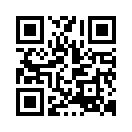Q. How does a resistive touchscreen detect touched points?
Q. How does a resistive touchscreen detect touched points?How touch screens detect where you pressedResistive Touch Screen consist of transparent films such as acrylic films and glasses with electric conductive and resistive layers (ITO). When fingers or pens touch the screen, the layers are pressed together, causing a change in the electrical current and thus a touch event will be registered. One of these two layers works as X-coordinate circuit whereas the other Y-coordinate.When a Resistive Touch Screen detects x-coordinate information, a voltage is supplied from one electrode (Vcc) of the X-coordinate. Here, the other electrode is called GND. A touch event on the screen makes a contact between X-coordinate layer and Y-coordinate layer. Thus, the analog voltage at the touched spot (Xl) on the X-coordinate layer is measured at Y-coordinate electrode (A_in). The nearer to the Vcc, the higher the voltage measured. At the point E, A_in = Vcc. To the contrary, the voltage is lower if the point gets closer to the GND. At the point A, A_in = 0V *. By A/V conversion, the voltage can be translated into coordinate data.Likewise, the system detects Y-coordinate information. By doing this alternately, the system acquires the coordinate value of a touched spot. Note * It takes no account of electricity loss in the controller circuit or the touch screen. In reality, the range of measured voltage is smaller than Vcc-GND due to this loss.Vcc = 5.0Vxl A_in Examples of output coordinate dataA 0V 0000h(Minimum)B 1.25V 00FFhC 2.5V 01FFhD 3.75V 02FFhE 5V 03FFh(Maximum)


